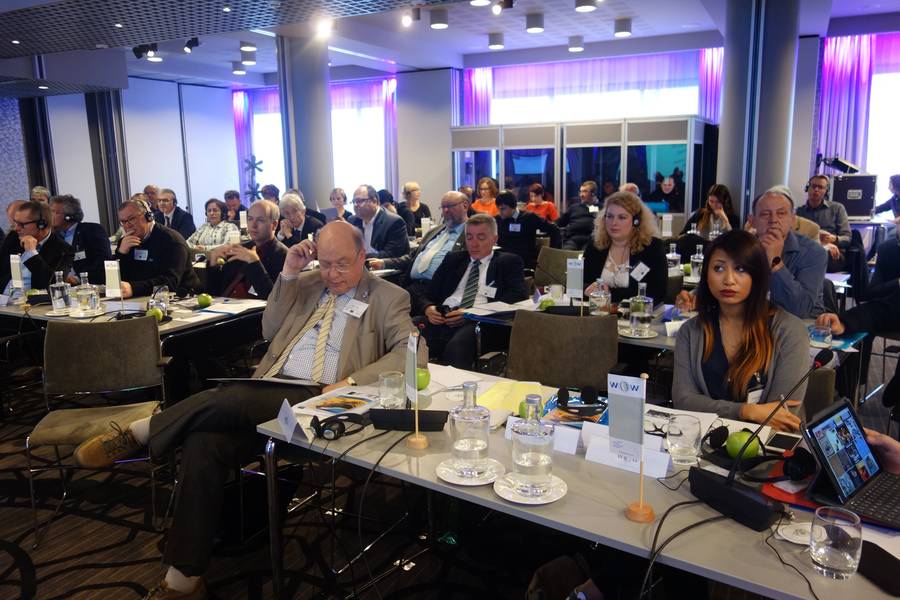The pros and cons of having a minimum-wage by law is a point for heated discussions. Within Europe and the European Union there are various systems for minimum-wages. The height of the minimum-wage varies tremendously as well. The reasons for not having a minimum-wage by law differ. Besides that, it does not necessarily mean that there is no minimum-wage.
Critics state that a minimum-wage by law will be negative for the employees, since jobs will be lost. The idea is that companies may not be able to continue paying a certain number of employees. In other words, the employer can hire more people by paying them less. If a minimum-wage by law would be introduced this would no longer be the case.
Trade unions in some of those countries without minimum-wage by law do not want to give up there right for being the representative of employees in the negotiations. It is also an important incentive for people to become a member. And it explains the high level of people falling under a collective agreement.
But what are the effects of a minimum-wage by law? What about the quality of work? Will people be dismissed because they are too expensive? Will it lead to precarious situations on the work-floor? What can be seen in many countries in Western Europe is that companies find ways to work around the system in order not to have to pay the minimum-wage.
The seminar titled “What is the advantage/disadvantage of having a minimum-wage by law? Will this affect the quality of work?”, tried to give an answer to the questions mentioned above. Experts and trade-union leaders discussed the various systems of coming to standards for a minimum-wage. Be it by law or not. The seminar which took place in Amsterdam, the Netherlands from 03 to 05 February 2016 was organized by the World Organization of Workers (WOW) in cooperation with the European Organization for Workers’ Questions (EZA) and supported by the European Commission. 47 Delegates from thirteen different EU Member States and Candidate Member States, participated in this topical theme.
Ms. Paulien Osse, Director of WageIndicator, started by saying that in the time the organizationsstarted its work, the knowledge among both employers and workers of the different minimum-wage rates was patchy. It was not clear where to get the detailed rates from. This was the basis for founding the WagIndicator. To create more awareness and understanding about Wages, Labour Law and Career by sharing and comparing information. And to have more labour market transparency for the benefit of all. Employers, employees and workers worldwide.
According to Ms. Osse, minimum-wage by law leads to a better redistribution and improves the situation of the poor and low-waged. Furthermore, there are no or minimal negative employment effects. It is enforceable and there is a high compliance rate. Lastly, there are no frustrations for collective bargaining, while trade union membership important. There is an important role for unions and employers (-associations). They have to work towards realistic, transparent and enforceable minimum-wages.
Ms. Cornelia Pöttinger questioned whether the minimum wage is the responsibility of the government or of that of the trade unions. In Austria there is no minimum-wage by law. Minimum-wage is the result of collective bargaining by the social partners. 98% of the labour-force is protected by a collective labour agreement. This is extremely high in comparison to other EU countries. The overall perceptions is that a minimum-wage by law will not be an improvement. Rather the opposite. It will weaken and worsen the collective labour agreements. On the other hand it will protect the “working poor”.
In Denmark the situation is again quite different. Mr. Rolf Weber explained the minimum wage in Denmark and the position of unions. In Denmark, pay and working conditions are typically laid down by collective agreements concluded between trade unions and employers organisations. This system of labour market regulation is referred to as the Danish Model. The Danish Model is characterised by the fact that the social partners determine the rules of the game on the labour market. The philosophy is that the social partners are in the best position to know the problems on the labour market. The main reason why there is no minimum wage by law in Denmark is this strong Danish Model tradition. The problem is that the collective agreements do not cover the whole labour market in Denmark. 25% of the employees on the private labour market are not covered by a collective agreement. A survey in Denmark shows that 51% of the Danes are of the opinion that the Parliament should decide a minimums wage which cover the entire labour Market in Denmark.
Mr. Gonzalo Postigo Zabay explained the situation in Spain, which has been hit very hard by the crisis. When looking at the minimum-wage (SMI – Salario Mínimo Interprofesional) in Spain wesee that it is set annually by the government. The regulation and the setting of the national minimum wage must be approved of by the Government and have the status of law.
The current SMI in Spain is in the danger zone of poverty. It is not sufficient for people to survive with such a salary. The consequence is that Spain is experiencing a new phenomenon of working poor, which affects workers who are contracted in precarious manners, temporary (sometimes a week or a day) and for which their income is insufficient for leading a decent life. These type of workers have to complement their salary with the support of food banks.
Mrs. Prof. Gordana Gasmi spoke about the approach of the minimum-wage in the Western Balkans and the EU Member States. Compared to the EU Member States, national minimum wages are much lower in average terms in the Balkan region. Minimum wages are regulated by labour-law regulations in all Balkan countries. Socioeconomic councils are authorized to conduct negotiations with the government on the minimum-wage rates. Tripartite structure of socio-economic councils (representatives of employers, the government representatives and of the trade unions) are in place. In Serbia, only 30 – 40 % of employees earn above € 350 – € 400 that is considered to be an average wage. This are alarming data for the standard of living. The majority of the employees are living on the edge of real poverty. Bad practices occurs as in many sectors not even the statutory minimum wage rate is implemented. Trade unions perform continuing pressure for an increase of minimum wage rates in the region, but without results.
The final speaker of the seminar was Mr. Professor Joachim Möller who spoke about the German minimum wage by law one year after its introduction in the 1st of January 2015. Before that date there was no general statutory minimum wage in Germany except for 12 special industries/ professions. In 2015 a statutory minimum wage without regional differentiation of 8,50 Euro per hour was introduced. Critics predicted huge employment losses and harm to the poorest. The results, however, showed no discernible GDP Effects After January 1, 2015 and ongoing positive labour-market trends. What could be concluded was that the introduction of minimum wages in Germany can be considered a success story. There was an ongoing positive GDP and labour market trend, it had positive effects on employment eligible to social security, there was a reduction in minor employment (mini-jobs), and there were positive effects for job stability.
for pictures click here





